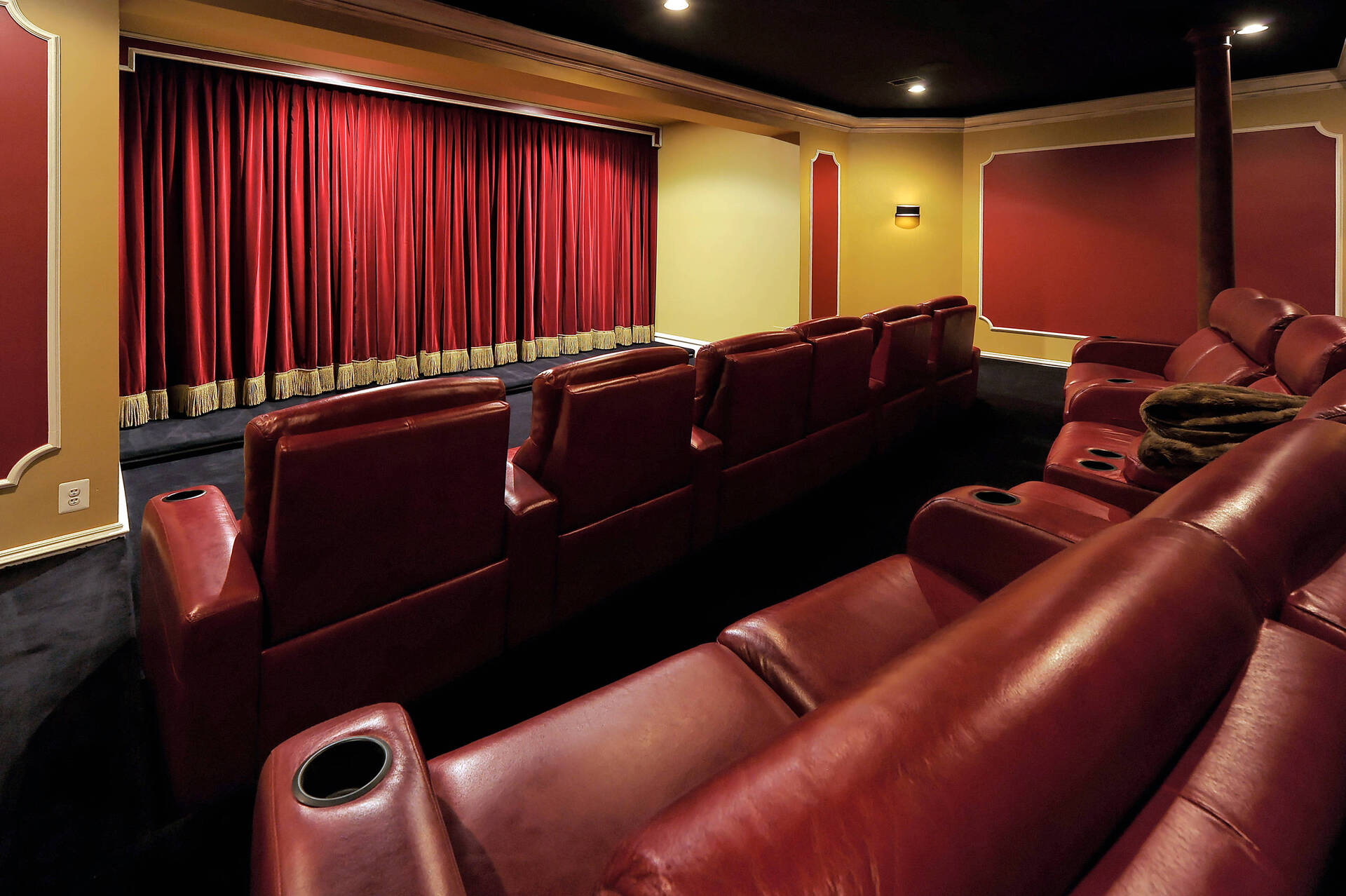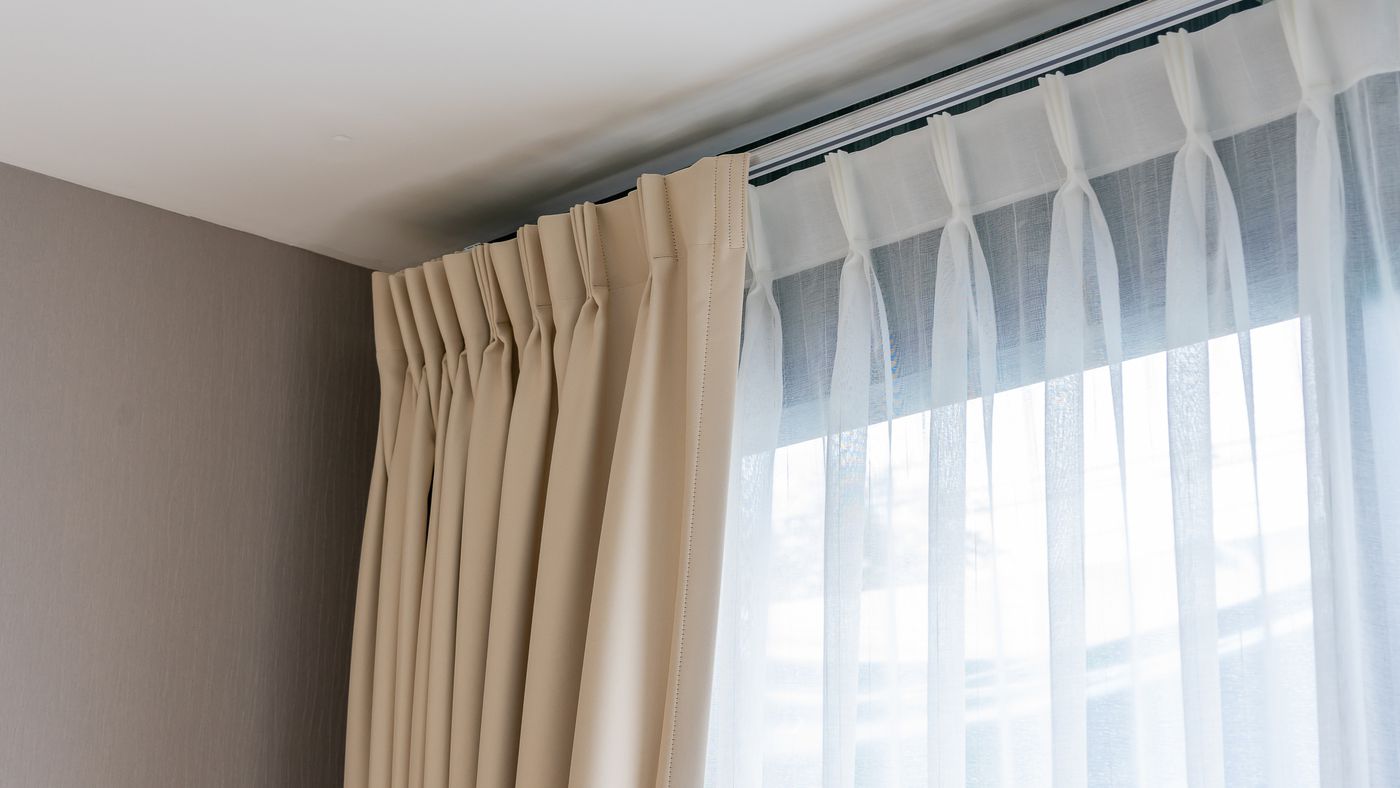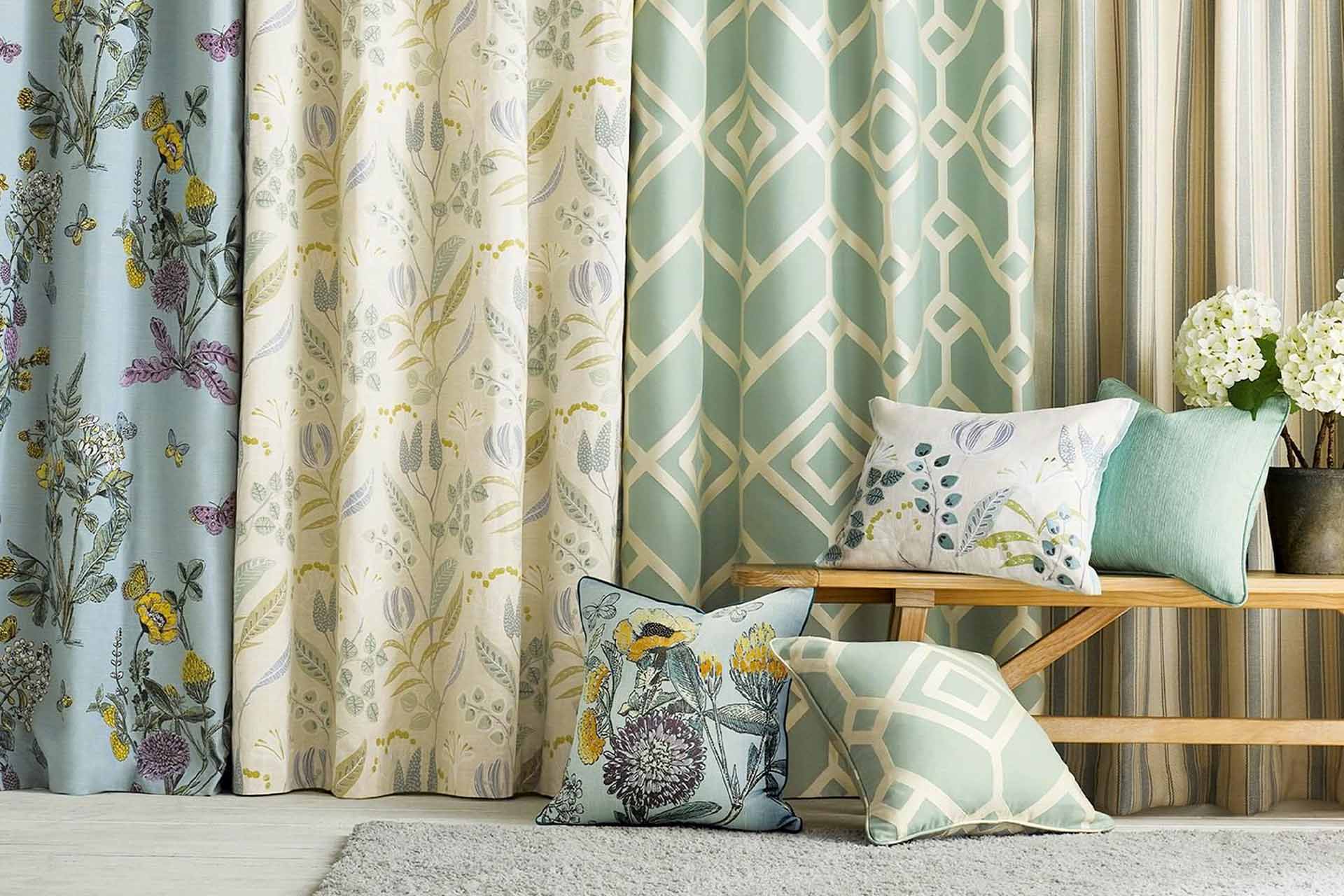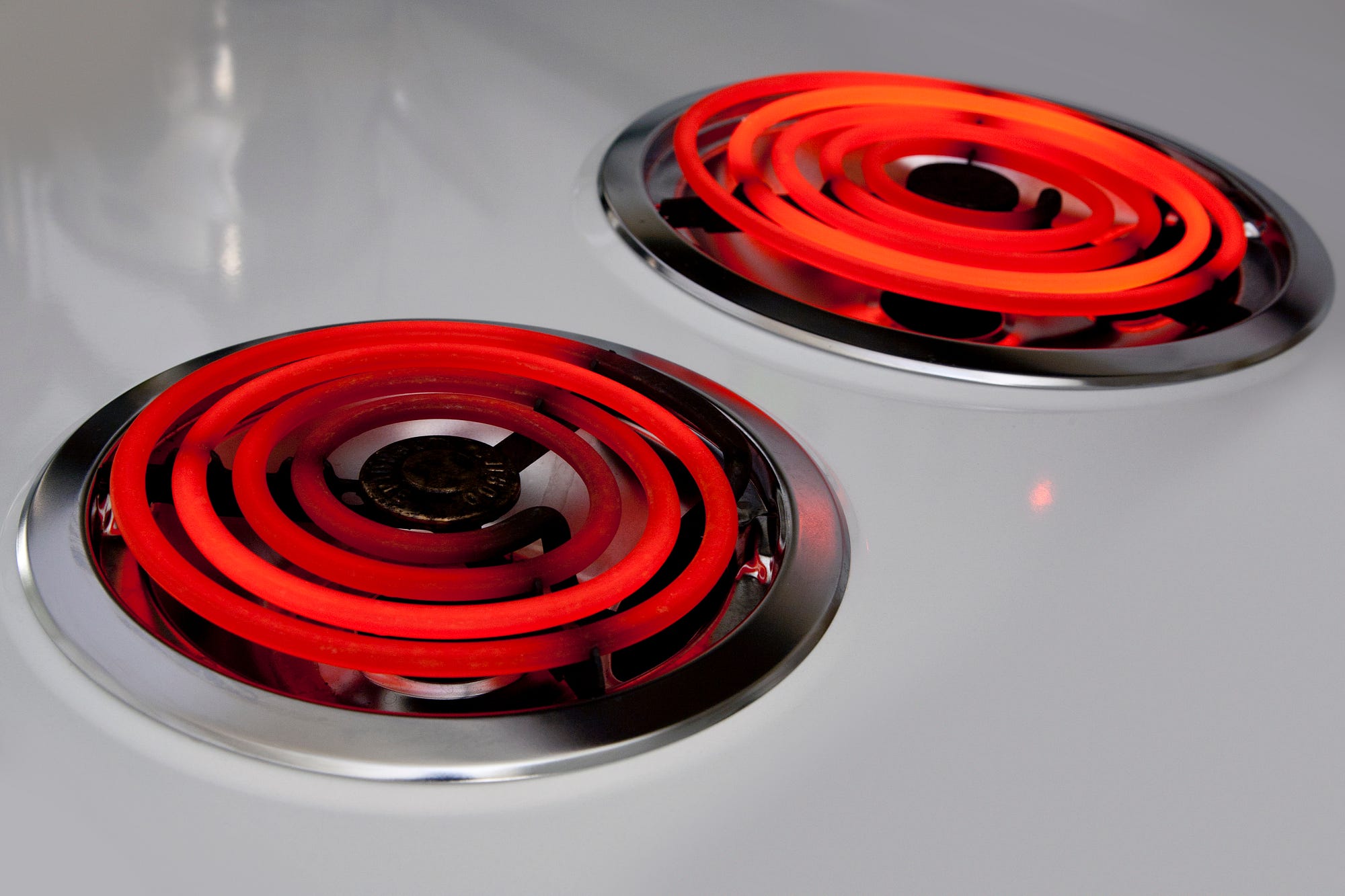

Articles
Why Are Theatre Curtains Red
Modified: January 5, 2024
Discover the fascinating history behind why theatre curtains are often red in this collection of informative articles on stage design and traditions.
(Many of the links in this article redirect to a specific reviewed product. Your purchase of these products through affiliate links helps to generate commission for Storables.com, at no extra cost. Learn more)
Introduction
Theatre curtains play an integral role in setting the stage for a performance. They not only serve a practical purpose by hiding the backstage area from the audience’s view but also contribute to the overall aesthetic and atmosphere of the production. When it comes to theatre curtains, the color red is often the most commonly used and iconic choice.
In this article, we will delve into the reasons behind the prevalence of red theatre curtains and explore the historical, symbolic, and psychological significance associated with this vibrant color choice. We will also examine how red curtains have become deeply ingrained in cultural references and the collective imagination.
So, why are theatre curtains red? Let’s explore the intriguing story behind this age-old tradition.
Key Takeaways:
- The iconic red theatre curtains, steeped in history and symbolism, evoke passion, power, and intensity, setting the stage for captivating performances and engaging the audience on a deeper emotional level.
- Red theatre curtains, with their practical benefits and cultural references, symbolize new beginnings and the magic of live performances, permeating various artistic forms and enriching the theatrical experience for performers and audiences worldwide.
Read more: What Are Theatre Curtains Made Of
Historical Background
To understand why theatre curtains are predominantly red, we must delve into the rich history of theatre and its traditions. The use of curtains in theatrical performances dates back to ancient Greece, where large pieces of fabric were used to conceal actors and scenery changes. The early Greeks primarily used simple, unadorned white curtains.
However, it was during the Elizabethan era in the 16th century that the concept of the “theatre curtain” as we know it today began to take shape. Playhouses such as the Globe Theatre in London started to employ elaborate, ornate curtains to create a sense of anticipation and spectacle for the audience.
During this period, the color red became a popular choice for theatre curtains. The deep red hue was achieved by using dyes made from natural materials such as vegetable sources or crushed insects. The vibrant red coloration added a touch of grandeur and richness to the stage, enhancing the visual impact of the performances.
Furthermore, red was favored because of its association with power, royalty, and nobility. The use of red curtains was a way of replicating the opulence of royal courts and creating a sense of majesty within the theater. It was also a practical choice since red was less prone to fading and staining compared to other colors available at the time.
Over the years, the tradition of red theatre curtains continued to evolve, adapting to changes in theatrical productions and emerging technologies. Today, although curtains come in various colors and styles, the allure of the classic red curtain remains ever-present, captivating audiences and invoking a sense of excitement and anticipation.
Symbolism of the Color Red
Red is a color that holds significant symbolism in many cultures and contexts. When it comes to theatre curtains, the color red carries several meaningful associations that contribute to its enduring popularity.
First and foremost, red is often associated with passion, drama, and intensity. It is a color that evokes strong emotions and captures attention. By using red curtains, theaters create an immersive experience for the audience, signaling that they are about to witness a performance that will be bold, vibrant, and filled with excitement.
Red is also closely linked to emotions such as love, desire, and power. This connection can enhance the storytelling aspect of a theatrical production, adding depth and complexity to the narrative. The presence of red curtains can create a subconscious connection between the audience and the characters on stage, intensifying the emotional impact of the performance.
In addition to its emotional connotations, red carries symbolic meaning in various cultural and religious contexts. In some cultures, red is associated with good luck, prosperity, and celebration. For example, in Chinese culture, red is traditionally associated with joy and is often used in festive occasions such as weddings and Lunar New Year celebrations. By incorporating red curtains, theaters may tap into these positive cultural associations, creating an atmosphere of festivity and auspiciousness.
Furthermore, red has often been used to symbolize power, authority, and importance. This symbolic connection dates back to ancient times when red was associated with high-ranking officials and royalty. The choice of red curtains in theater settings can evoke a sense of importance and elevate the stature of the performance, enhancing the overall grandeur and impact.
Overall, the symbolism of the color red aligns perfectly with the essence and allure of theatrical productions. It sets the stage for powerful performances, captures attention, and brings an element of passion and intensity to the experience.
Practical Reasons for Choosing Red
While the symbolism of the color red plays a significant role in the choice of red theatre curtains, there are also practical reasons behind this preference. These practical considerations have contributed to the enduring popularity of red curtains in theatrical settings.
Firstly, red has excellent visibility on stage. The vibrant hue stands out against various lighting conditions, ensuring that the curtains are easily noticeable by the audience. This increased visibility allows for smooth scene transitions and adds to the overall professionalism of the production.
Furthermore, red curtains have a timeless quality that can complement a wide range of theatrical productions. Red is a versatile color that can seamlessly adapt to different themes, styles, and genres, making it a reliable choice for theaters seeking curtains that can be used for various performances without the need for frequent replacements.
Moreover, red is less prone to showing dirt and stains compared to lighter colors. The deep shade and richness of the color help camouflage any imperfections or minor marks that may occur during the hustle and bustle of backstage activities. This practical advantage allows theaters to maintain a polished and well-presented stage even after multiple shows.
In addition, red curtains can also contribute to the acoustic quality of a theater. The smooth surface of the fabric helps absorb sound waves, reducing unwanted echoes and creating a more enjoyable auditory experience for the audience.
Lastly, red curtains can provide a sense of warmth and intimacy to the performance space. The color red has a cozy and inviting quality that can create a welcoming atmosphere, encouraging the audience to feel more engaged and connected to the show.
Overall, the practical reasons for choosing red theatre curtains, such as visibility, versatility, durability, acoustic benefits, and creating a welcoming ambiance, make it a practical and effective choice for theaters worldwide.
The color red was historically used for theatre curtains because it was believed to symbolize wealth, power, and passion, creating an atmosphere of excitement and anticipation for the audience.
Psychological Impact of Red Curtains
The color red has a profound psychological impact on individuals, and the choice of red curtains in theater settings can enhance the overall experience for both performers and audience members.
One of the primary psychological effects of red curtains is the stimulation of energy and excitement. The vibrant and intense nature of the color red can create a sense of anticipation and heightened arousal among the audience. This psychological response sets the stage for an engaging and emotionally charged performance.
Red has also been associated with increased heart rate and blood pressure. When individuals are exposed to the color red, their physiological responses can become more activated, leading to a surge in energy and attentiveness. This heightened state can result in a more attentive and focused audience, enhancing their enjoyment and involvement in the performance.
Additionally, red is known to evoke emotions such as passion and desire. The presence of red curtains in a theatrical setting can amplify these emotions, creating a deeper emotional connection between the audience and the performers. This heightened emotional state can intensify the impact of the storytelling and leave a lasting impression on the viewers.
Furthermore, the color red has a tendency to command attention. It naturally draws the gaze and stands out against other colors. By using red curtains, theaters can ensure that the audience’s focus is directed towards the stage, creating a captivating and immersive experience.
In terms of psychology of color, red is also often associated with strength, power, and confidence. The bold and commanding presence of red curtains can enhance the performers’ confidence, allowing them to fully embrace and embody their roles. This psychological boost can contribute to more powerful and convincing performances.
It is important to note that the psychological effects of color can vary from individual to individual. Some people may be more susceptible to the energizing and stimulating effects of red, while others may experience a different emotional response. However, the overall impact of red curtains on the psychological state of the audience is undeniable, adding depth, intensity, and excitement to the theatrical experience.
Read more: What Color Curtains Go With Red Walls
Cultural References to Red Theatre Curtains
Red theatre curtains hold a deep cultural significance that extends beyond the realm of performance. The iconic image of red curtains opening, revealing the stage, has become deeply ingrained in popular culture and has been referenced and represented in various artistic mediums.
In film and television, the image of red curtains being drawn back before a performance is often used as a visual shorthand to signify the beginning of a show or the unveiling of something significant. This representation has become a widely recognized symbol, reflecting the excitement and anticipation associated with live performances.
Red theatre curtains have also been referenced in literature, where they often serve as a metaphor for the drama and illusions of life. Writers utilize the imagery of opening and closing curtains to explore themes of revelation, hidden truths, and the contrast between reality and fiction.
Furthermore, in the world of fashion, red curtains have influenced design choices. The rich, deep red color and velvety texture of theatre curtains have inspired fashion designers to incorporate these elements into their collections, evoking a sense of opulence and theatricality on the runway.
Moreover, red curtains have a prominent presence in the art world. Artists have captured the allure of red theatre curtains through paintings, photography, and installations, portraying the mystique and transformative power of the theatrical experience.
The cultural references to red theatre curtains extend to popular music as well. Many songs and albums make direct or indirect allusions to the iconic opening of the curtains, symbolizing new beginnings, revelations, or the start of a captivating performance.
In addition, the red curtains of theaters have also become synonymous with prestigious awards ceremonies, such as the Oscars and the Tony Awards. The opening and closing of these red velvet curtains symbolize the beginning and end of a night of celebration and recognition in the world of entertainment.
Overall, the cultural references to red theatre curtains highlight their symbolic significance and enduring impact on various artistic forms. They symbolize the magic, excitement, and grandeur of live performances, transcending the boundaries of the stage and captivating audiences across different mediums and creative expressions.
Conclusion
The red theatre curtain holds a special place in the world of performing arts, with a history and symbolism that captivates audiences and ignites the theatrical experience. Through centuries of tradition, red curtains have become synonymous with excitement, drama, and anticipation.
From its origins in ancient Greece to its prominence during the Elizabethan era and its continued prevalence today, the historical background of red theatre curtains showcases its enduring appeal and timeless charm. The symbolism of red as a color of passion, power, and intensity further enhances the impact of these curtains on the theatrical experience.
Practically, red curtains offer visibility, versatility, durability, and acoustic benefits that make them a practical choice for theaters worldwide. Red curtains can transform a stage, creating an atmosphere that is both inviting and captivating, while also improving the overall presentation of the performance.
On a psychological level, red curtains evoke emotions, stimulate energy, and command attention, engaging the audience on a deeper level. The color red amplifies the intensity of performances and enhances the connections between performers and viewers.
Culturally, red theatre curtains have permeated various artistic mediums, including film, literature, fashion, art, and music. Their iconic representation has become a symbol of new beginnings, revelations, and the magic of live performances.
In conclusion, the prevalence and significance of red theatre curtains can be attributed to a combination of historical, symbolic, practical, psychological, and cultural factors. The utilization of red curtains in theaters around the world brings a sense of tradition, grandeur, and excitement to the stage, enriching the theatrical experience for performers and audiences alike.
So, the next time you find yourself in a theater, take a moment to appreciate the iconic red curtains that signal the start of an extraordinary performance, as you prepare to be transported into a world of imagination, emotion, and unforgettable moments.
Frequently Asked Questions about Why Are Theatre Curtains Red
Was this page helpful?
At Storables.com, we guarantee accurate and reliable information. Our content, validated by Expert Board Contributors, is crafted following stringent Editorial Policies. We're committed to providing you with well-researched, expert-backed insights for all your informational needs.















0 thoughts on “Why Are Theatre Curtains Red”